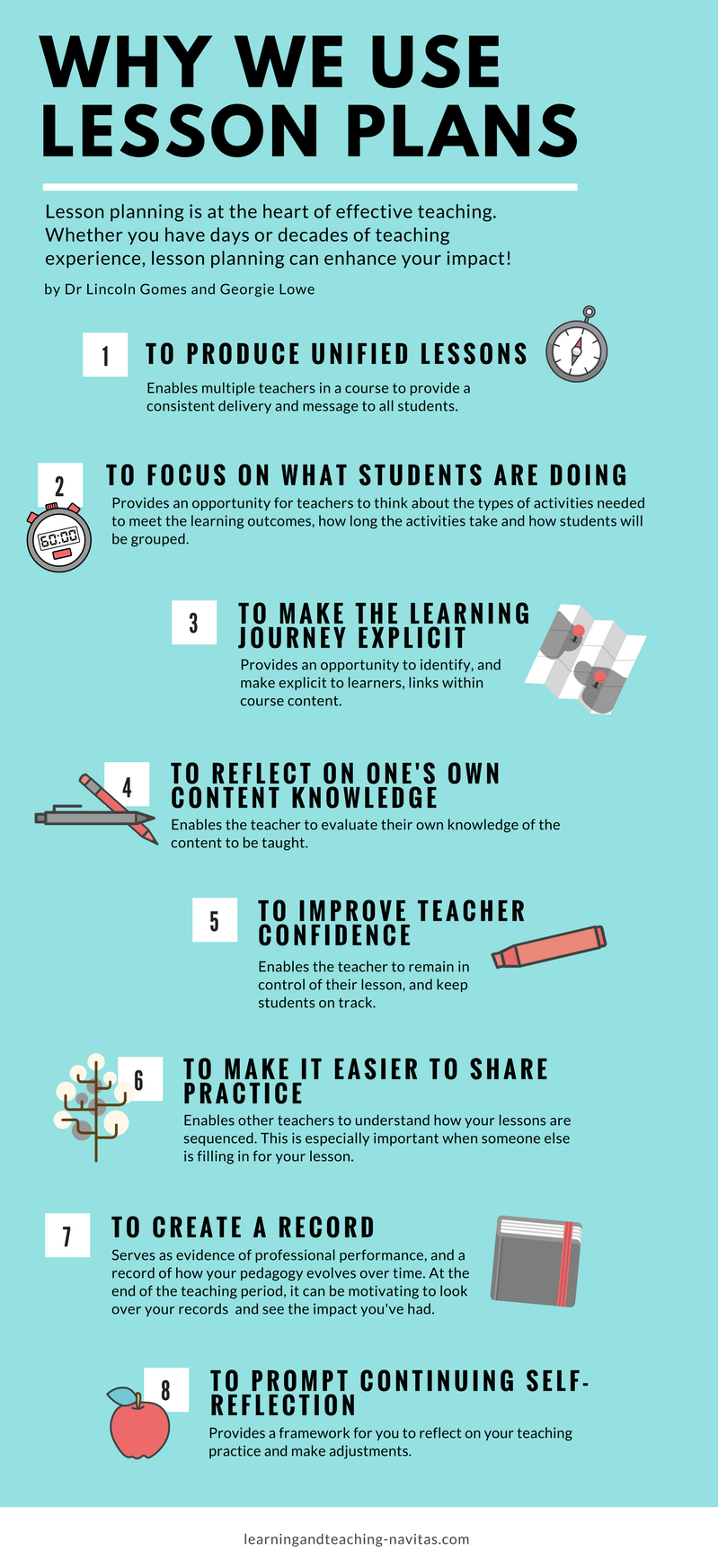8 reasons to start using lesson plans

Teaching to a group of students face-to-face or online can be a daunting prospect, especially if you have limited experience teaching your particular subject, or are in the process of making significant changes to your course. Can you recall what it felt like to be under-prepared for teaching in a class? How did you feel last time your class was disrupted – perhaps by a projector not working, fire drills or having to fill in for a sick teacher at the last moment?
In any given class there are multiple things that can’t be predicted, however, the more prepared we are, the more effective we will be at adapting to unexpected events.
Below are eight benefits of using lesson plans:
For many of us, we might approach a class with a standard format that we know works because we’ve adapted it over a number of attempts. Often, we feel confident to recall this sequence from memory, because of our deep involvement in the process. So what impact does documenting this learning sequence on paper have on the teacher?
As Alison Cutler from Deakin College reflected: “Lesson plans assist me to stay focused on the objectives of that session and to steer clear of relying too heavily on ‘teacher talk’. As well, I find lesson plans useful in encouraging/reminding me to build in opportunities for feedback which I can sometimes overlook.” Moreover, Felicity Prentice from La Trobe College, Melbourne expressed that “it enables [teaching staff] to contextualise the lesson within the whole subject, the online materials and activities and contemporaneous subjects.”
In addition, documenting your lesson can save time on administration. Dr Catherine Sicurella, from Deakin College, described how: “It was suddenly very easy to share with colleagues exactly how I use blended learning strategies in the classroom. It is so quick and easy to share a lesson plan document with someone instead of trying to list and justify all the things we do in a 4 hour teaching block.”
So where do you go from here?
A simple Google search for a lesson plan template will produce myriad examples of how you could set out a lesson. Often, however, these lesson plans don’t take into account the more tacit aspects of teaching, such as who our learners are and where they’ve come from.
The template we provide below will help you on your way to thinking about these aspects as you structure your learning.
Once you’ve drafted your lesson plan it’s important to consider four important points:
- Seek out feedback from your colleagues. If you give your lesson plan to another teacher, would it be clear to them what the goal of the lesson is?
- If you coordinate a subject with a large number of teachers, be proactive and collate the activities they use in their teaching. Having a selection of activities that you can use in your lesson plan will increase its flexibility.
- A lesson plan is a living document. Don’t be afraid to update and modify it.
- Most importantly, be flexible in your delivery by responding to students’ needs as they emerge. Your lesson plan should be a guide, not a rigid formula.
Download this template for lesson planning. If you are interested in learning more about lesson plans and designing for blended learning, register for the course – Learning Design Essentials (open to Navitas staff only).
References
- Jensen, L. (2001). Chapter 26. In M. Calce-Marcia (Ed.). Teaching English as a second or foreign language, (3rd ed., pp. 403-408). Boston, MA: Heinle & Heinle.
- Reed, M. & Michaud, C. (2010) Goal-Driven Lesson Planning for Teaching English to Speakers of Other Languages. University of Michigan Press.
- Scrivener, J. (2005). Learning Teaching (2nd ed., pp.109-110). Oxford, UK: Macmillan Education.

